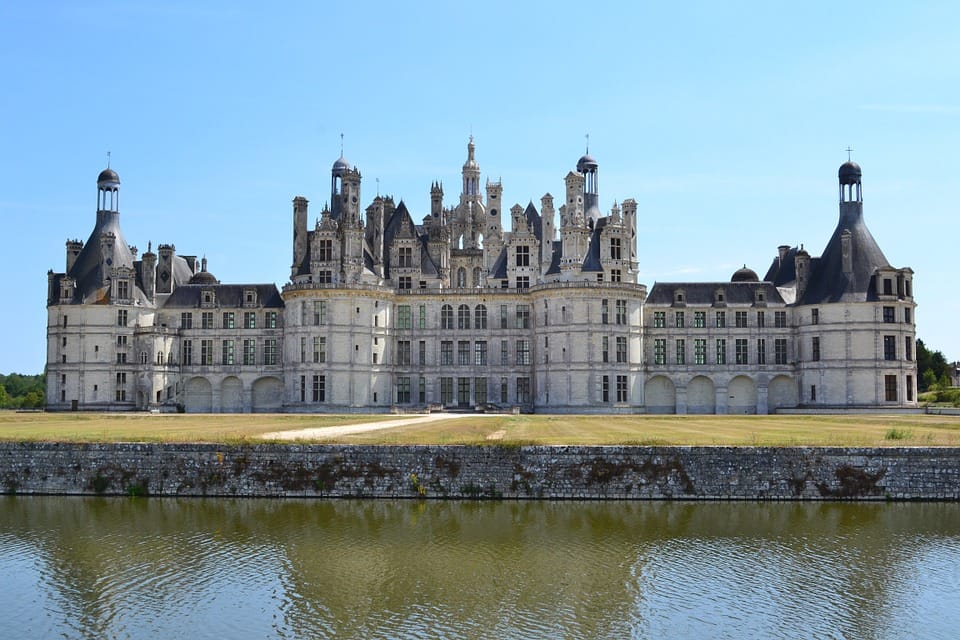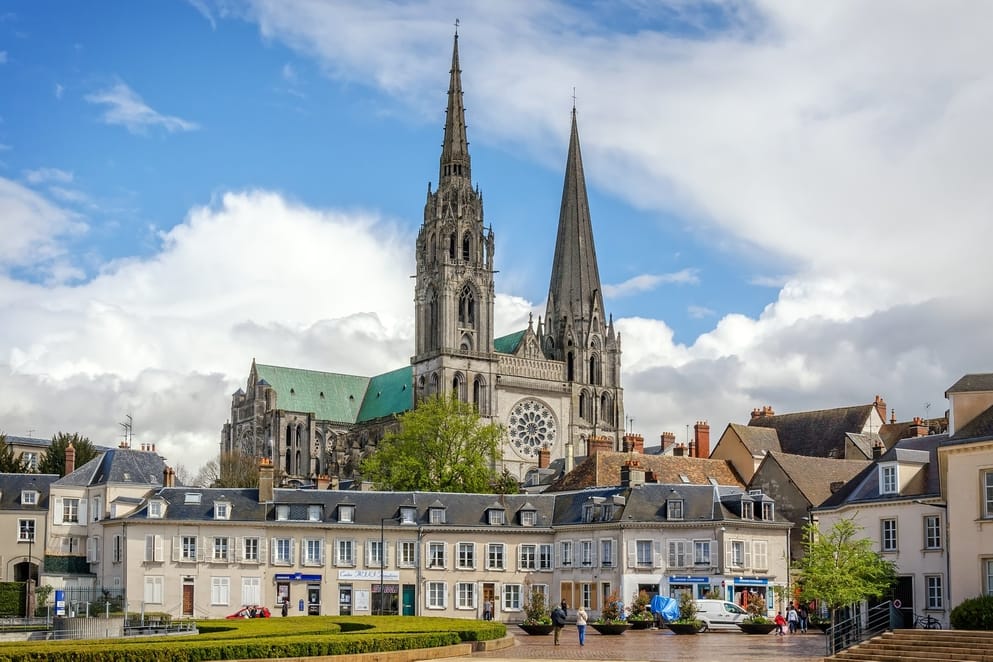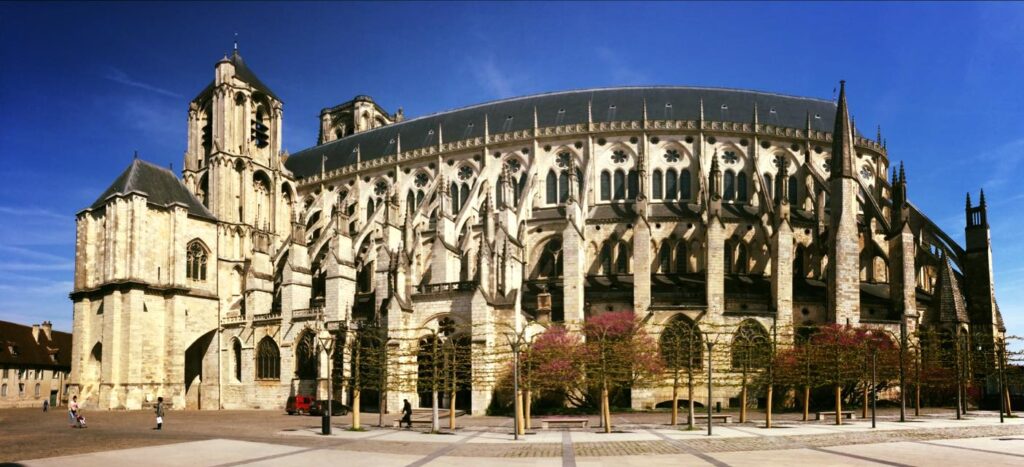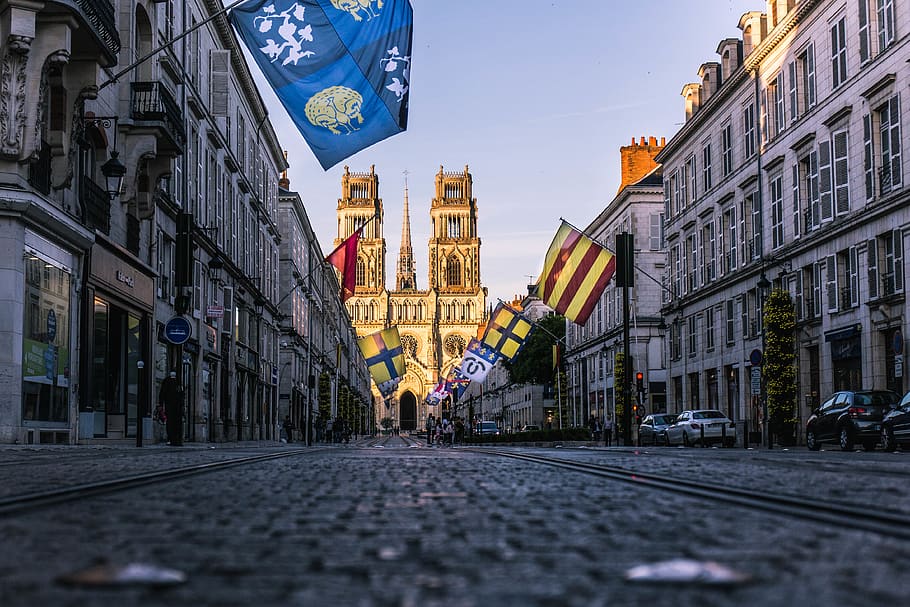What is Loire Valley Famous For
For keen lovers of French architecture and history, the Loire Valley might need no introduction. Home to many chateaux and often called the ‘Garden of France’, this region is a must-visit to have a genuine taste of what France has to offer. The area is where many visitors will find a wide range of traditional French foods, some of the most stunning gardens the country has to offer, and the many historic structures linked to the French monarchy.
While the Loire Valley is not as famous as Paris or Nice, it definitely remains one of the most visited places in l’Hexagon. So ensure that you make plans towards visiting this fantastic place. You can even make things easier by booking a tour of the entire region.
>>Also Read: Things To Do In Loire Valley
Here Are Some of Loire Valley is Famous For:
Château de Chambord
In a stately location on the Loire River’s left bank, the Château of Chambord is the poster Renaissance monument in the country. A spectacular sight to see, this imposing castle inspired the Château de Versailles’ building. In the early 1500s, the estate was built for King Francis I, who didn’t spare any expense on it. Measuring 117 m by 156 m, the building was designed on a scale of massive proportions.
The Château de Chambord is perfect for royalty with its impressive vaulted ceilings, turreted towers, a massive double-helix staircase at the entry hall, and 440 rooms. Louis XIV often lived in this castle, hosting lavish gala balls, amusing soirees, and hunting parties. When he was staying at the château as a Louis XIV guest, Molière, the distinguished playwright, presented his comedy Le Bourgeois Gentilhomme.

With six gates that give access to the grounds, the expansive property of Chambord is surrounded by a 32 km wall, which is the longest in the country. Bout four-fifths of the property’s 5500 hectares of parkland is pristine forests. Landscaped in geometric forms with tidy flowerbeds and well-manicured shrubs, visitors are sure to be astonished by the French Formal Gardens.
When the king was in residence, the garden’s Italianate terrace was a major characteristic of court life. Now, Chambord is a must-visit spot in the Loire Valley, and it is just around a two-hour drive from the French capital. Visitors can take a train ride (80 minutes) from Paris Austerlitz to the Blois Chambord station, which is a half-an-hour taxi or shuttle ride away from the castle.
>>Also Read: How to Get From Paris to Loire Valley
Château de Chenonceau
A beautiful castle with a uniquely feminine vibe, Chenonceau used to be immensely influenced by the popular women who previously lived here. In 1512, Thomas Bohier and his wife Catherine Briçonnet acquired this castle and renovated it by rebuilding in Renaissance-esque with an Italianate staircase and a broad central entrance.
In 1535, just after its acquisition by the Crown Estate, the castle became King Henry II’s property, who presented the castle to Diane de Poitiers- his mistress in 1547. The king’s widow, Catherine de Médicis that took over the stately residence in 1533, made the most distinct feature of the residence, the Corps de Logis. This two-story gallery perches on a royal arched bridge that transverses the Cher River, giving the impression of a floating castle on the water.

The Corps de Logis gallery, to further impress visitors, showcases antique tapestries and fine paintings. With an atmosphere of both grandeur and delicacy, the castle’s elegant halls used to offer the perfect setting for sophisticated social gatherings.
Matching the beauty of the interior, the château’s Renaissance French Gardens’ view is embellished with flower beds and decorative pools. It was Diane de Poitiers’ idea for the garden’s broad ‘floating parterre’.
Chartres Cathedral (Cathédrale Notre-Dame de Chartres)
The inviting old town of Chartres enjoys the reputation of having the UNESCO-listed Cathédrale Notre-Dame de Chartres, a significant pilgrimage destination in the Middle Ages. This breathtaking French Gothic sanctuary stands in a raised position, with its suspended spires that can be seen from afar.

Built in the 1100s and 1200s, Chartres Cathedral is among the best-preserved and finest medieval churches in the country. It is also a significant landmark of Christian architecture and art. Across Europe, the influence of this cathedral can be seen in many other Gothic sanctuaries, including Reims and Amiens in France, Cologne Cathedral in Germany, Westminster Abbey in England, and the Catedral de León in Spain. Chartres’ stained-glass windows also inspired similar the cathedrals in Le Man, Rouen, Tours, Bourges, in France, and Canterbury in England. A day trip from Paris will be easy.
>>Also Read: Most Beautiful Cathedrals in France
Bourges
Having lots of quaint palaces and burghers’ houses, the old city of Bourges has a picturesque setup on the Aveyron and Yevre Rivers in the significant province of Berry. The UNESCO-listed Saint-Etienne Cathedral is the town’s highlight and ranks among the most impressive French cathedrals built from the 1100s and 1200s.

Flanked by big towers, the ornate west front has about 5 doorways with opulent sculptural decoration, and a beautiful 1300s rose window. One can enter there through the Romanesque south doorway, where a Christ in Majesty’s figure is encircled by the four Evangelists’ symbols.
The interior fascinates visitors with its beautiful sanctuary illuminated by 1200s stained-glass windows. In a chapel close to the choir are the Duc Jean de Berry and his wife’s dramatic 1400s kneeling figures. Visitors can also mount the tower’s top to take in incredible views. The Palais Jacques Cour is another noteworthy building. It was built by Jacques Cour (the royal treasurer) in 1443-1453, typifying secular Gothic architecture.
Azay-le-Rideau
This place is famous for its astonishing Renaissance castle, a building encircled by elegant gardens and a moat. The Château d’Azay-le-Rideau was built by a wealthy financier in the 1500s. The design of this royal castle was immensely influenced by Italian architecture. The highlight on the ground floor is the dining room with a well-decorated chimney and many tapestries.

Deluxe Renaissance furniture and paintings adorn the reception rooms. There is a beautiful church in the town of Azay-le-Rideau, the Eglise Saint-Symphorien, that mixes Gothic and Romanesque styles.
At the south aisle, the façade exposes Carolingian reliefs’ remains. And in the close by Château of Saché, Honoré de Balza (1799-1850), the famous author produced some of his novels. The room where the novelist worked has been preserved as it was.
Orléans
After Tours, the largest town in the Loire Valley is Orléans. Significantly linked to Joan of Arc’s story, the city owes the 17-year-old heroine its survival who, in 1429, helped lead the French to triumph against the English when the French town was besieged. The Maison de Jeanne-d’Arc is a small museum in a restored 1400s house that is dedicated to Joan d’Arc, who the Catholic Church has now recognized as a saint.

The 1200s Cathédrale Sainte-Croix is another landmark associated with the ‘Maid of Orleans’ where she spent time praying. The sanctuary’s monument exterior has five doorways, 81 m twin towers, and a large Baroque decoration. The massive size of the interior impresses, while flashy stained-glass windows give visitors the chance to wonder at Joan of Arc’s history.
For a further, delve into Orléan’s culture, visitors can see the great art collection at the Musée des Beaux-Arts, that showcases close to 700 artworks (decorative objects, sculptures, and paintings) from the 1400s to the 1900s, like works by Correggio, Gaugin, Tintoretto, Picasso, and Delacroix.
About 27 km away from the town is the Château de Meaung-Sur-Loire, one of Loire Valley’s oldest castles. Located in broad parklands, the castle displays the French architecture evolution with different architectural details from the 1100s stands high to the 1700 façade. The chateau also assumed a strategic position in 1429 for Joan of Arc at an important moment in the Hundred Years’ War.
Also Read:
>>Is Orléans Worth Visiting?
>>What is Orléans Famous For
Vineyards
The Loire Valley area is widely known for its excellent wines. The area is marked with vineyards from Sancerre to the ocean, and it provides various wines to suit your taste from vibrant Sancerres to soft vourays.
What is Loire Valley Famous For – Summary
The Loire Valley is an astounding region to fulfill your French fantasies. It is about a short train trip from the French capital and a simple drive from Normandy’s coast, after arriving, stately castles stand out from shining sunflower fields, medieval towns with bubbling markets and some of the finest wines in the world will greet visitors.
